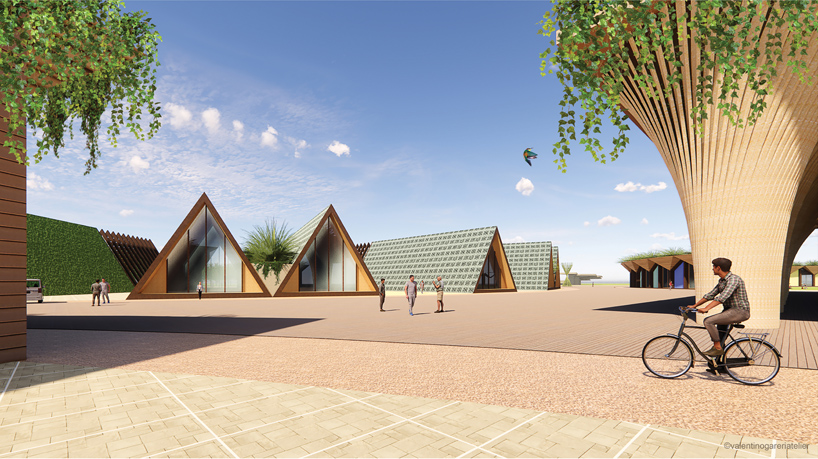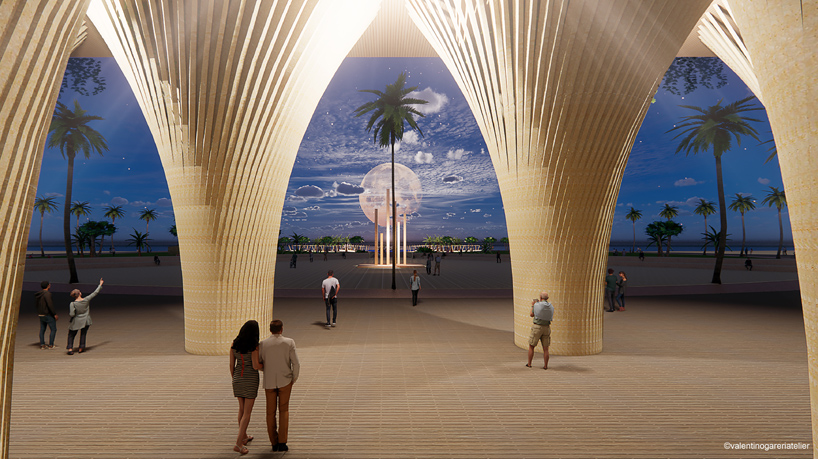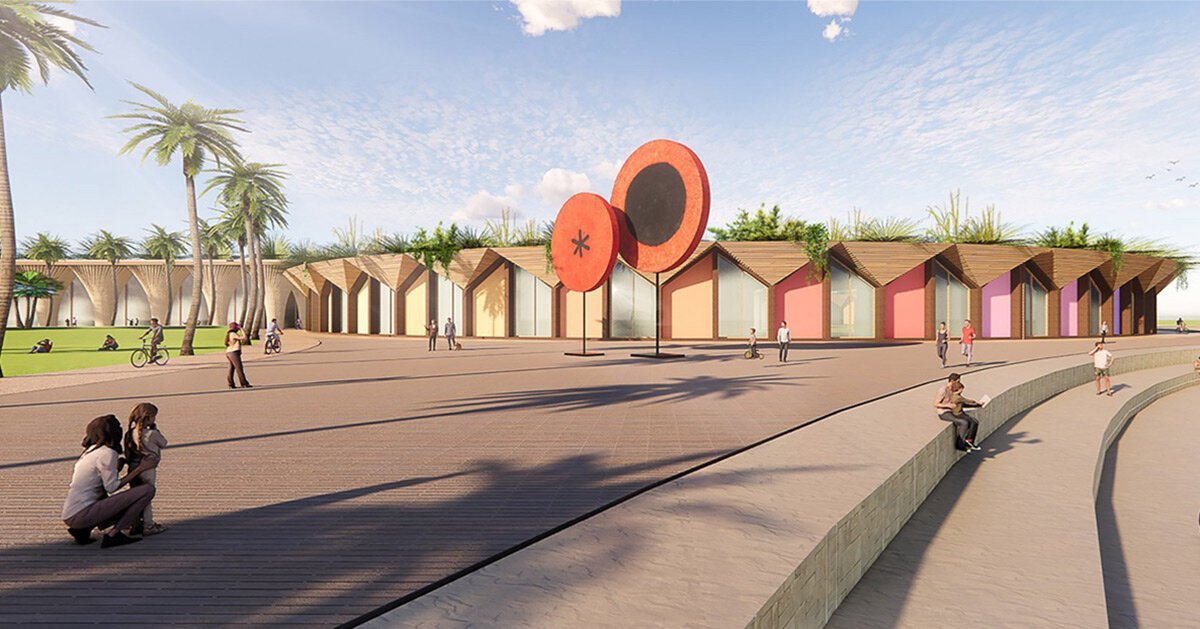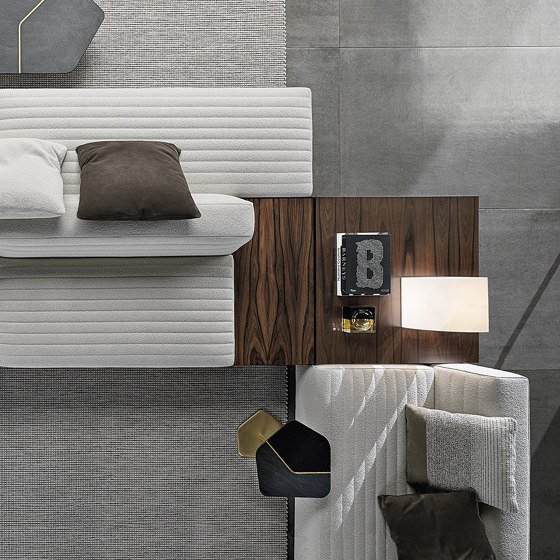valentino gareri atelier designs modular village in ecuador produced from 3D printed cacao waste
a new ‘silicon valley’ for circular economy in the cacao industry
valentino gareri atelier has designed a modular and sustainable village in manabi, ecuador, made from 3D printed cacao waste. created for chocolate manufacturer MUZE cacao and nonprofit organization avanti, the project will be the ‘silicon valley’ for circular economy innovators; a space for inventions, and a testing ground for agtech, fintech, foodtech, startups, and companies; manufacturers, producers, and researchers. the complex takes shape as a global network of sustainable and smart villages, a carbon-neutral destination and innovation center for circular economy in the cacao industry, a co-living space for change-makers to connect, co-create, get inspired, and ignite social impact.
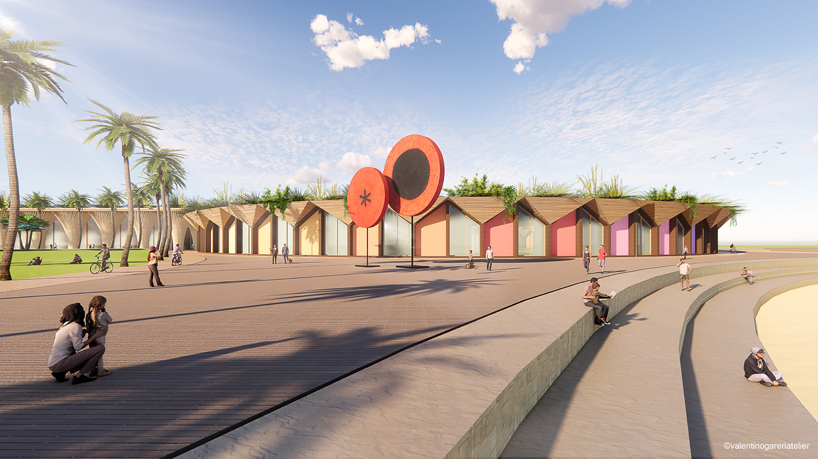
all images courtesy of denis guchev
modular, sustainable, connected
the design by valentino gareri atelier (find more here) incorporates five core principles. first of all, it is modular, meaning that it is extendable, replicable, and adaptable to different sites, dimensions and geometries. in addition, it is fully functional — the village will operate as a cacao processing, chocolate factory, educational and research center, co-living, co-working, and cultural reference point for the local community and a conscious tourism destination. it is also sustainable, serving as a self-sufficient village made of local materials such as bamboo, timber, and 3D printed structures made of cacao shell waste biofilaments. the project is also tech-enabled, using blockchain, IoT, and NFTs. last but not least, the cacao eco-village is connected to the local community and to its traditions.
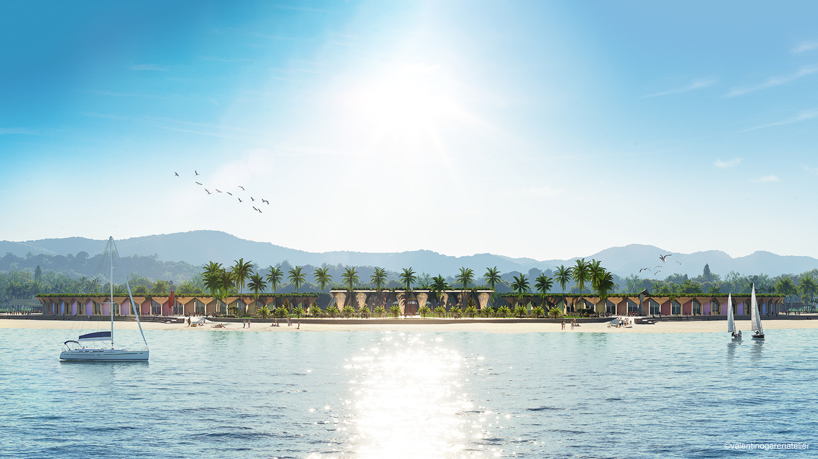
drawing from local tradition and cacao trees
‘we have pushed the circular economy core principles so much that they informed the design philosophy of the entire project. the cacao waste, result of the chocolate production process, will be re-utilized for 3d-printing parts of the village. waste is not only turned into a resource, but into architecture. in the not-too-distant future, we will be able to design buildings entirely made of natural materials and recycle them at the end of their life cycle in order either to create new ones, or to return them back to nature.’ shares valentino gareri. the facades draw inspiration from the wide range of multi-colored ecuadorian houses and from the cacao trees colorful fruits. the form of the buildings facilitates rainwater collection: the water tanks are integrated in the roofs, whose shape draws inspiration from the local ecuadorian art patterns.
the village is provided with a dense network of cycle-pedestrian boulevards, and the use of electric vehicles is highly encouraged with the presence of charging stations, while the cars and trucks transits are limited only around the factory and production area. this new asset class of sustainable and smart infrastructure emerges as a solution for the environmental and social impact of the cacao industry, using a circular economy model as a creative solution for reducing environmental footprint, generating increased income, reducing resource dependency, and minimizing waste.
